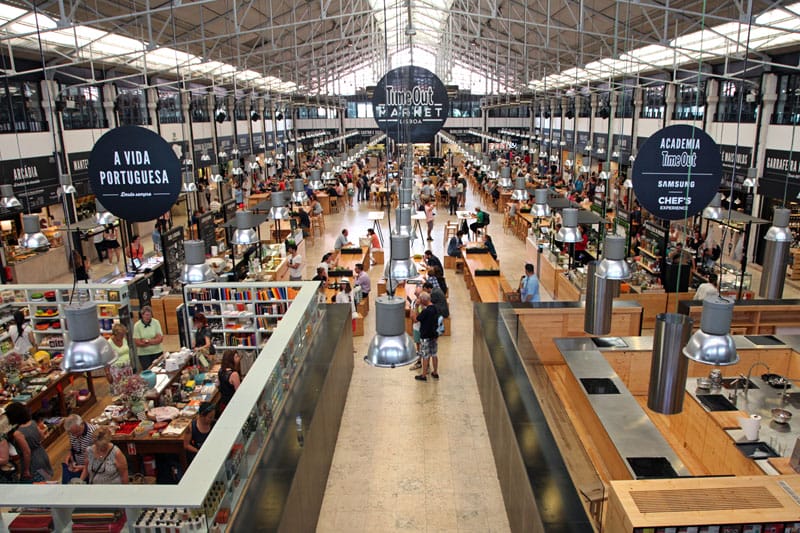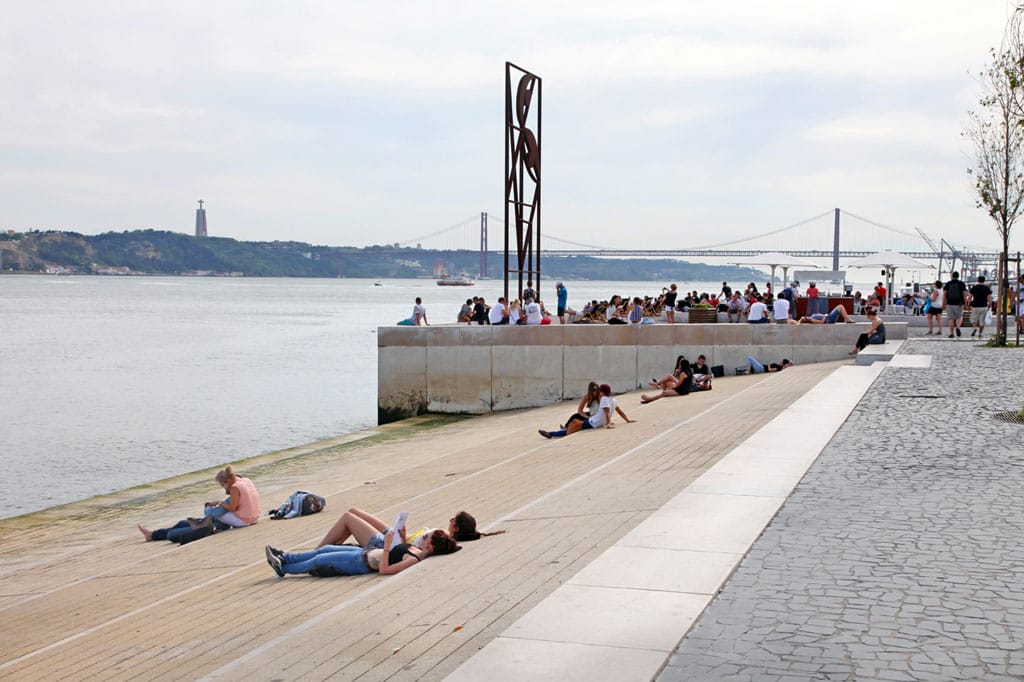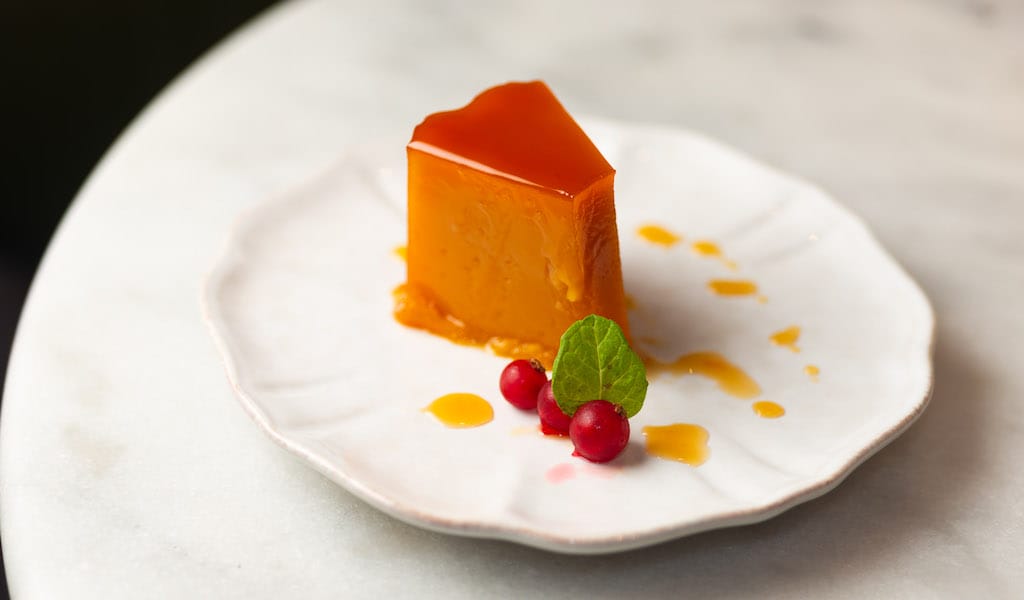Summertime in Lisbon can mean some very hot days, making locations that get a cool Atlantic breeze at the end of the afternoon ideal for throwing down a blanket.
One such perfect spot for a picnic in Lisbon is the new promenade along the Tagus River, located between Praça do Comercio and Cais do Sodré. Ribeira das Naus, formerly part of the docklands where ships were built, was renewed in 2014 as part of the redevelopment plan for the central waterfront, transforming the historic quay into a large public space with a pedestrian walkway and aligning park. On the large steps that hug the water, you can also watch the sunset over the April 25 Bridge.
There are several nearby options to fill your picnic basket, the closest being the road just behind the park, Rua do Arsenal/Rua Bernadinho. Apart from a small grocery and a kebab shop, there are several stores selling traditional canned fish – a basic form of fast food that has become a gourmet item and take-home souvenir for visitors. Sardines, mackerel, codfish or tuna are some of the options that can be a healthy and satisfying choice for a quick meal, and you can pick up some fresh bread at the bakery Leitaria Caneças to sop up the sauce.
The covered local market, Mercado da Ribeira, has a wealth of both fresh products and takeaway food. Installed in a 19th-century building, this old market has been a major food supplier of the city for over two centuries. Two years ago, City Hall allowed a private investor to renew and manage the space, transforming the western half into a food court. Both sides are a good choice for filling your basket, the traditional side for fresh, seasonal fruit and vegetables (summer is especially good for local loquats, white melon, cherries and grapes).

The other side of the market is a completely different situation. Responding to the new, tourism-driven face of the city, it has more than 30 restaurants that offer everything from creative versions of traditional Portuguese dishes to more globalized options, such as sushi, gourmet hamburgers, steak sandwiches or croquettes. Most diners eat at the provided tables, but it is possible to order to go.
The Pingo Doce supermarket inside the train-metro station Cais do Sodré also has a corner dedicated to takeaway meals, such as grilled chicken, empadão (meat pie), arroz de pato (rice with duck and chorizo) or spinach quiche. It also has a good stock of Portuguese wines; a good option for cooling down is the local vinho verde (literally “green wine”), which is made from young grapes and has a light, fresh, fruity-acid aroma with a slight yet satisfying fizz.
Ribeira das Naus has several options to sit and enjoy a local alfresco meal. The most scenic and comfortable are either the hilly green area that faces the Tagus or the flight of steps right on the riverside, where the water laps the concrete, beach-style. On a very hot day, the smaller park close to the kiosk might be a better idea, as it benefits from the ample shade of the plane trees.
Editor’s note: It’s Picnic Week at Culinary Backstreets, and in this week’s dispatches, our contributors have written about their favorite spots to eat outdoors as well as the best nearby shops to fill a picnic basket.
Editor’s note: We are regret to report that Leitaria Canecas is closed.
Published on July 11, 2016
Related stories
January 4, 2024
Lisbon“It’s the king of Portuguese gastronomy,” declares Miguel Oliveira. He’s describing pudim Abade de Priscos, one of Portugal’s most infamous desserts, and the dish that is the specialty of his Lisbon sweets shop. Allegedly invented by the eponymous abbot in the 19th century (pudim is a term that refers to a variety of steamed desserts…
December 7, 2022
MarseilleOver many epochs, Marseille has experienced waves of immigration and is considered to be an invaluable gateway city to France. Italian immigration to Marseille began in the late 18th century and increased significantly after the end of World War I, when France's industrial development required a great deal of labor. During the interwar period, 90…
December 6, 2019
BarcelonaIn 1949, when the patisserie that Josep Cudié had been working at as head pastry chef for a decade closed, his wife, Antonia Salleras, encouraged him to stop working for others and start working for himself. “Since you’re the creator of all these chocolates,” she said, “why don’t you just open your own business, making…

















































































